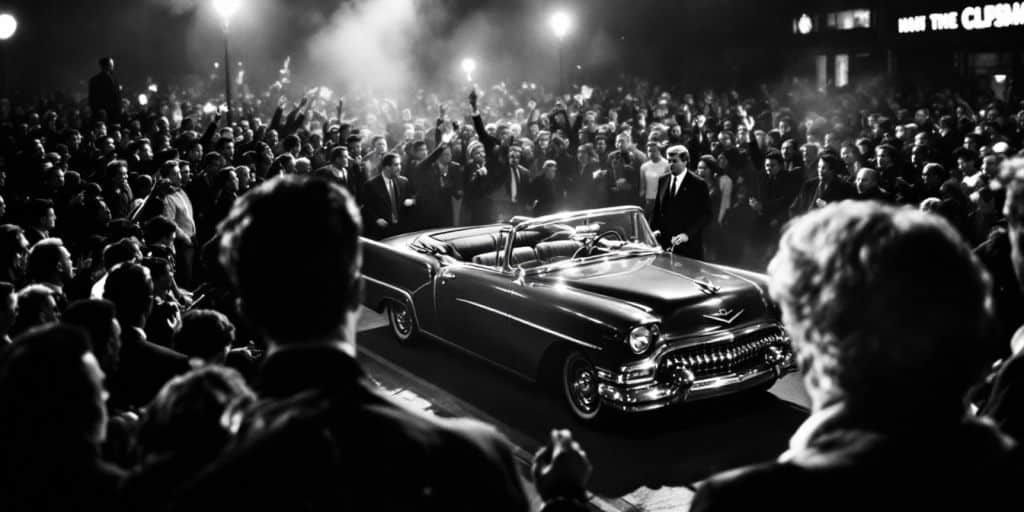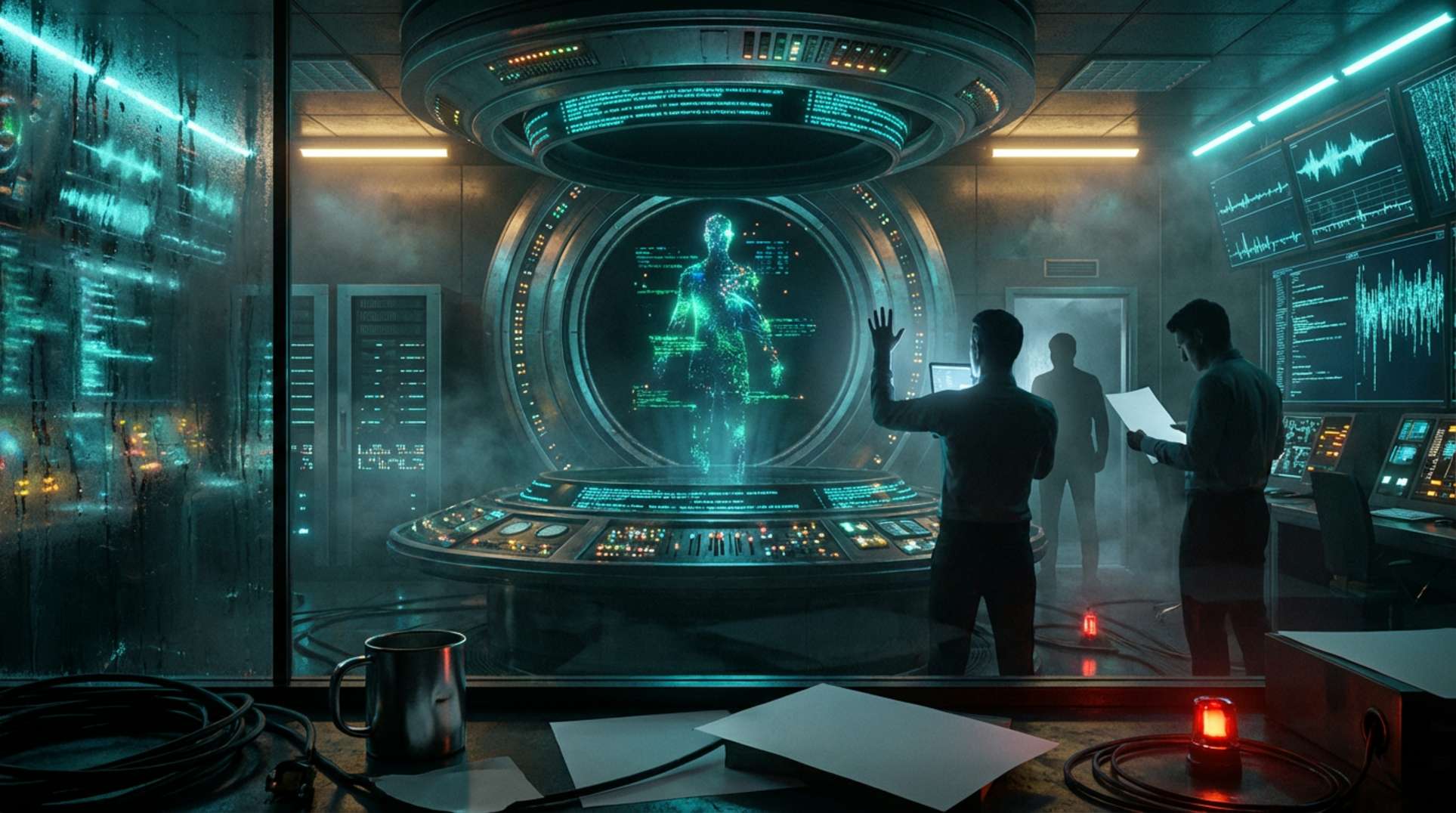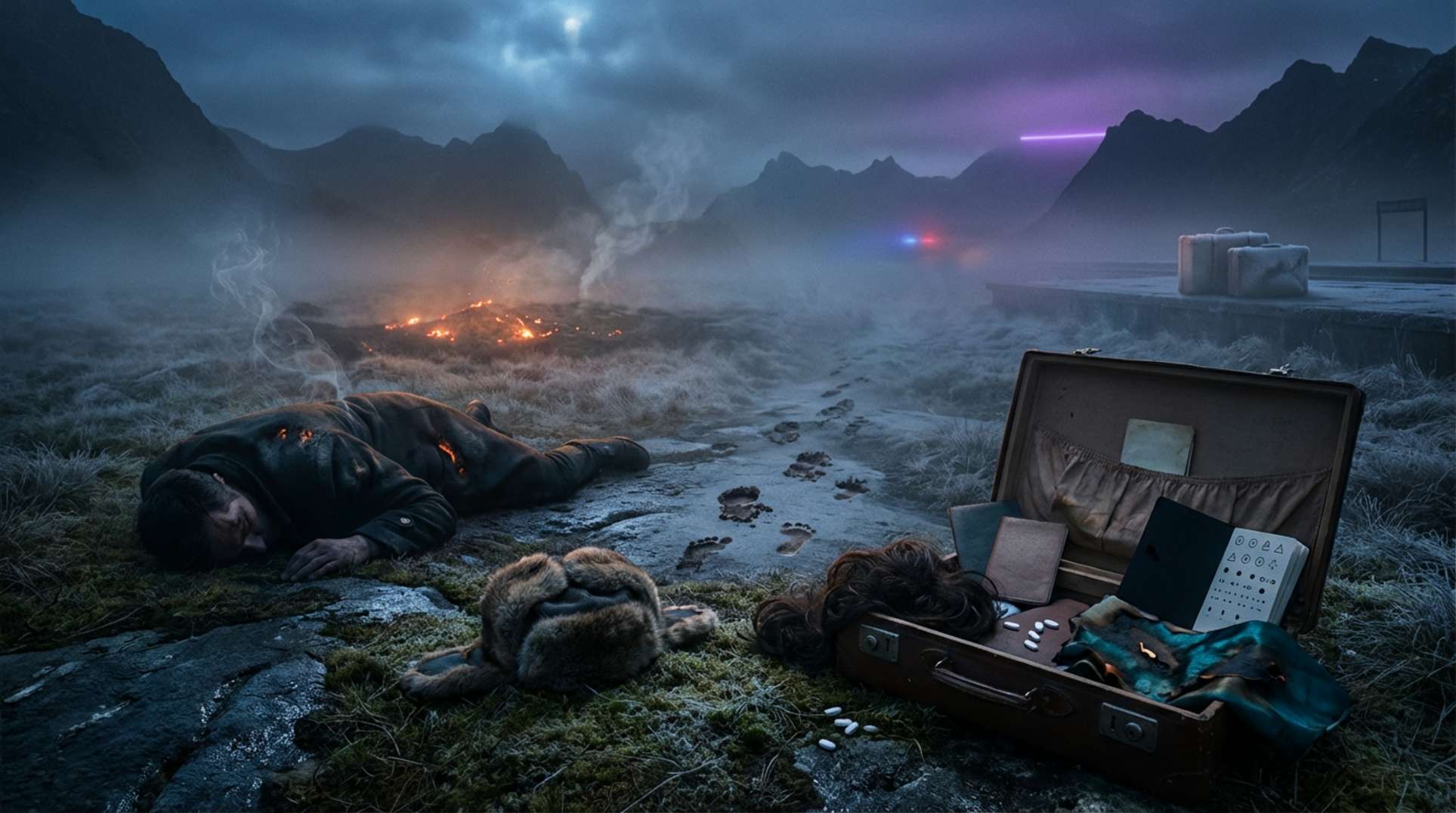The assassination of President John F. Kennedy on November 22, 1963, remains one of the most discussed events in American history. Over the years, various conspiracy theories have emerged, each suggesting different parties and motives behind this tragic event. From government agencies to organized crime, these theories capture the imagination and skepticism of many. In this article, we will explore some of the most popular conspiracy theories surrounding JFK’s assassination, examining their origins, key figures involved, and the evidence supporting or debunking them.
Key Takeaways
- Many people believe that JFK’s assassination involved more than just Lee Harvey Oswald.
- The Grassy Knoll theory suggests there was a second shooter on the hill where Kennedy was shot.
- Some theories point to the CIA as having motives to eliminate JFK due to his policies.
- The Mafia is often implicated, with claims that they wanted revenge against Kennedy for his crackdown on organized crime.
- Lyndon B. Johnson’s alleged involvement raises questions about political rivalry and power struggles.
The Grassy Knoll Theory

The Grassy Knoll Theory suggests that there was a second shooter involved in the assassination of President John F. Kennedy, located on a small hill known as the grassy knoll. This theory gained traction due to various witness testimonies and later investigations.
Origins of the Theory
The idea of a second shooter on the grassy knoll emerged shortly after the assassination on November 22, 1963. The Warren Commission initially concluded that Lee Harvey Oswald acted alone, but many people found this hard to believe. In 1976, the House Select Committee on Assassinations suggested that there was "probably" a second shooter, reigniting public interest in the theory.
Key Proponents and Evidence
Several key pieces of evidence support the grassy knoll theory:
- Witness Testimonies: Many witnesses reported hearing shots from the grassy knoll area. For instance, out of 121 witnesses listed in the Warren Report, 51 indicated that shots came from this location.
- Acoustic Analysis: Some studies suggested that the sound of gunfire could have originated from the grassy knoll, although later investigations disputed this.
- Physical Evidence: Some researchers pointed to bullet holes in the presidential limousine as evidence of shots fired from the knoll.
Criticisms and Debunking
Despite its popularity, the grassy knoll theory has faced significant criticism:
- Inconsistent Testimonies: Many witnesses were confused and startled during the event, leading to inconsistent accounts of where the shots came from.
- Official Reports: The Warren Commission and later investigations found no credible evidence supporting the existence of a second shooter.
- Acoustic Studies: A 1982 study by the National Academy of Sciences concluded that reliable acoustic data did not support the theory of a second gunman.
The grassy knoll theory remains one of the most enduring conspiracy theories surrounding JFK’s assassination, reflecting the public’s skepticism towards official narratives.
In summary, while the grassy knoll theory has captivated many, it is essential to consider the evidence and criticisms surrounding it. The debate continues, highlighting the complexities of historical events and public perception.
The CIA Involvement Theory
Alleged Motives
The theory that the CIA was involved in the assassination of JFK stems from various motives, including:
- Discontent with Kennedy’s policies, especially regarding Cuba.
- Anger over the failed Bay of Pigs invasion.
- Concerns about Kennedy’s approach to the Cold War.
Key Figures Accused
Several key figures are often mentioned in this theory:
- James Angleton – CIA’s chief of counter-intelligence, believed to have orchestrated the plot.
- Allen Dulles – Former CIA director, who was dismissed by Kennedy after the Bay of Pigs.
- Lee Harvey Oswald – Alleged assassin, with claims he was a CIA agent or informant.
Evidence and Counterarguments
Evidence supporting this theory includes:
- Oswald’s trip to Mexico City, where he tried to contact Cuban and Soviet consulates.
- Allegations that the CIA tampered with files related to Oswald before and after the assassination.
- Testimonies from former intelligence officials suggesting a cover-up.
However, critics argue:
- There is no concrete evidence linking the CIA to the assassination.
- Many claims are based on speculation rather than facts.
- The CIA has consistently denied any involvement.
The idea that the CIA was involved in the assassination of JFK remains a controversial topic, with many believing it to be a conspiracy theory rather than a fact.
This theory continues to fuel debates and discussions about the events surrounding JFK’s assassination, highlighting the complexities of political power and intelligence operations.
The Mafia Connection
Historical Context
The idea that the Mafia was involved in the assassination of JFK has been around for decades. Many believe that the mob had a motive due to Kennedy’s crackdown on organized crime. The Mafia had strong ties to Cuba, especially before the Cuban Revolution, and they were unhappy with JFK’s policies that affected their interests.
Key Figures and Allegations
Several key figures are often mentioned in connection with this theory:
- Carlos Marcello: Allegedly threatened JFK over his brother’s anti-Mafia efforts.
- Santo Trafficante Jr.: A powerful mobster with connections to Cuba.
- Jack Ruby: The man who killed Lee Harvey Oswald, had ties to organized crime.
Investigations and Findings
Investigations have revealed some interesting connections:
- Jack Ruby’s Calls: Ruby made numerous calls to mob associates before the assassination.
- Johnny Roselli’s Testimony: A mobster who claimed to have knowledge of a conspiracy involving the CIA and the Mafia.
- Government Documents: Some documents suggest that the Mafia collaborated with the CIA on assassination attempts against Fidel Castro.
| Key Figures | Allegations |
|---|---|
| Carlos Marcello | Threatened JFK due to anti-Mafia actions |
| Santo Trafficante Jr. | Involved in organized crime and Cuba connections |
| Jack Ruby | Tied to mob and killed Oswald |
The Mafia’s involvement in JFK’s assassination remains a controversial topic, with many believing that organized crime played a significant role in the events leading up to that fateful day.
The Lyndon B. Johnson Theory
Political Rivalry
The theory that Lyndon B. Johnson was involved in the assassination of JFK stems from political rivalry. Many believe that Johnson feared being dropped from the Democratic ticket for the 1964 election. This fear may have motivated him to take drastic actions to secure his position.
Alleged Involvement
Several authors and researchers have suggested that Johnson played a key role in the conspiracy. Notable claims include:
- Max Holland noted that the first allegations against Johnson appeared in a book by Penn Jones, Jr. in 1966.
- Joachim Joesten accused Johnson of orchestrating the assassination in his 1968 book.
- Barr McClellan claimed in 2003 that Johnson masterminded the assassination to cover up scandals and maintain power.
Public Perception and Criticism
A 2003 Gallup poll revealed that nearly 20% of Americans suspected Johnson’s involvement. Critics argue that these theories are based on speculation rather than solid evidence. Many historians, including Michael L. Kurtz, have stated that there is no credible proof linking Johnson to the assassination.
The idea that a sitting president could be involved in such a plot raises serious questions about trust in government institutions.
In summary, while the Lyndon B. Johnson Theory remains a popular conspiracy, it is met with skepticism from many historians and experts.
The Soviet and Cuban Connection
Oswald’s Trip to Mexico
Lee Harvey Oswald’s trip to Mexico City in September 1963 raised eyebrows. During this time, he tried to contact both the Cuban and Soviet consulates. This has led some to speculate about a possible connection between Oswald and foreign governments. Many believe this trip was significant in linking Oswald to a larger conspiracy.
Alleged Soviet Involvement
Some conspiracy theorists argue that the Soviet Union, under Nikita Khrushchev, was involved in the assassination. They suggest that Khrushchev was embarrassed after the Cuban Missile Crisis and wanted revenge. However, both the Warren Commission and the House Select Committee on Assassinations found no solid evidence supporting this theory.
Cuban Government’s Role
The Cuban government has also been implicated in various theories. After the failed Bay of Pigs invasion, many Cuban exiles blamed President Kennedy for not providing enough support. Some believe that these exiles, angry at Kennedy, might have had a role in the assassination. The House Select Committee noted that while organized anti-Castro groups were not directly involved, individual members could have been.
Summary of Theories
- Soviet Involvement: Allegations of a Soviet plot due to Cold War tensions.
- Cuban Government: Speculation about retaliation from Cuba after the Bay of Pigs invasion.
- Cuban Exiles: Anger from exiles over Kennedy’s policies may have led to individual actions against him.
The intertwining of these theories reflects the complex political landscape of the time, where many felt that unsolved crimes were at play, leading to a multitude of conspiracy theories surrounding the assassination.
The Umbrella Man Theory
Origins and Development
The Umbrella Man Theory revolves around a mysterious figure seen holding an umbrella during the assassination of President John F. Kennedy on November 22, 1963. This was peculiar because it was a sunny day in Dallas, Texas. The man, later identified as Louie Steven Witt, raised the umbrella as the presidential motorcade passed by, leading many to speculate about his intentions.
Key Evidence and Interpretations
Several interpretations have emerged regarding the umbrella’s purpose:
- Signal to Assassins: Some theorists believe the umbrella was used to signal other gunmen.
- Poison Dart: Another theory suggests that the umbrella could have fired a dart containing a paralyzing agent, incapacitating Kennedy.
- Heckling: Witt himself claimed he brought the umbrella to mock Kennedy, as it was a symbol of appeasement associated with British Prime Minister Neville Chamberlain, whom Joseph Kennedy supported.
Debunking and Public Reaction
Despite the various theories, many experts have debunked the more sensational claims:
- Witt’s Testimony: In 1978, Witt testified that he had no weapon in the umbrella and was merely trying to make a political statement.
- Lack of Evidence: Investigations found no credible evidence supporting the idea that the umbrella was used for anything sinister.
- Public Skepticism: While some still cling to the conspiracy, the majority view Witt’s actions as a misguided attempt at protest rather than a plot to assassinate the president.
The fascination with the Umbrella Man reflects a broader interest in conspiracy theories, often fueled by the psychology of unexplained phenomena. People are drawn to these stories, seeking answers to complex events that seem beyond comprehension.
The Multiple Gunmen Theory

House Select Committee on Assassinations
The Multiple Gunmen Theory suggests that more than one shooter was involved in the assassination of President John F. Kennedy. This theory gained traction after the United States House Select Committee on Assassinations (HSCA) was formed in 1976 to investigate the assassination further.
Acoustic Evidence
The HSCA concluded that there was likely a second gunman, based on acoustic evidence that indicated four shots were fired during the incident. This contradicted the earlier findings of the Warren Commission, which stated that only three shots were fired from the Texas School Book Depository.
Public Belief and Skepticism
Many Americans remain skeptical about the official narrative. A 2003 poll revealed that 70% of Americans believed Kennedy’s death was the result of a conspiracy rather than the act of a lone gunman. This skepticism has fueled numerous conspiracy theories over the decades.
Key Points
- Multiple shooters are believed to have fired at Kennedy.
- The HSCA’s findings differ from the Warren Commission’s conclusions.
- Public opinion leans towards the belief in a conspiracy.
Conclusion
The Multiple Gunmen Theory continues to be a significant part of the discussion surrounding JFK’s assassination, highlighting the ongoing debate about what really happened that day in Dallas.
The complexities of the JFK assassination reveal a landscape filled with unanswered questions and theories that challenge the official narrative.
The Secret Service Failures
Security Lapses
The assassination of President John F. Kennedy raised serious questions about the effectiveness of the Secret Service. Many believe that the agents failed to provide adequate protection during the Dallas visit. Key issues included:
- Lack of proper positioning: Agents were not stationed effectively around the motorcade.
- Disregard for protocol: The agent in the front seat, Roy Kellerman, did not shield the President, which was standard procedure.
- Inadequate response: There was confusion and delay in reacting to the shots fired.
Key Witnesses and Testimonies
Several witnesses have come forward to discuss the failures of the Secret Service. Notable testimonies include:
- Abraham Bolden, the first African American Secret Service agent, claimed agents expressed reluctance to protect Kennedy.
- Sam Kinney, the driver, stated that requests to reduce security measures were not made by Kennedy himself.
- Paul Landis, a Secret Service agent, revealed that he had crucial information about the bullet that was not disclosed at the time.
Impact on Public Trust
The failures of the Secret Service have led to a significant erosion of public trust. Many people feel that the government was not transparent about the events surrounding the assassination. This has fueled conspiracy theories and suspicions of government cover-ups. The ongoing secrecy surrounding the assassination records has only deepened these concerns, leading to a belief that the truth is being hidden from the public.
The lack of accountability and transparency in the Secret Service’s actions during the assassination has left a lasting impact on how the public views government agencies.
In the world of security, the Secret Service has faced some tough challenges. Their failures have raised questions about how well they protect important figures. If you want to learn more about these issues and explore deeper insights, visit our website for a wealth of resources and information. Don’t miss out on the chance to expand your knowledge!
Conclusion
In summary, the assassination of JFK continues to spark intense debate and speculation. Many people believe that there was more to the story than what was officially reported. The various conspiracy theories, whether they involve multiple shooters or hidden motives, show how deeply the public feels about this event. Even decades later, the mystery surrounding JFK’s death remains alive, as new theories and discussions emerge. This enduring interest highlights not only our fascination with history but also our desire to uncover the truth behind significant events.
Frequently Asked Questions
What is the Grassy Knoll Theory?
The Grassy Knoll Theory suggests that there was a second shooter on a small hill near where JFK was shot. Some believe this shooter contributed to the assassination.
Why do some people think the CIA was involved in JFK’s assassination?
Some theories claim the CIA had motives related to JFK’s policies. They argue that certain actions he took upset the agency.
What connection does the Mafia have to JFK’s assassination?
The Mafia is often linked to JFK’s death due to tensions with his brother, Robert Kennedy, who was tough on organized crime.
How does Lyndon B. Johnson fit into the conspiracy theories?
Some people believe LBJ may have been involved in JFK’s assassination to gain power and avoid political trouble.
What role did Oswald’s trip to Mexico play in the conspiracy theories?
Oswald’s trip to Mexico raised suspicions about possible connections to Soviet or Cuban agents, fueling conspiracy theories.
What is the Umbrella Man Theory?
The Umbrella Man Theory suggests that a man with an umbrella at the scene may have played a role in the assassination, possibly signaling or using a weapon.




